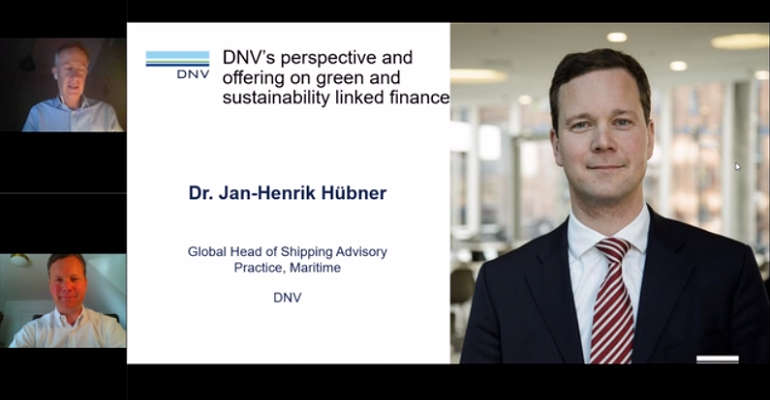This was a question which Dr Jan-Henrik Hübner, Global Head of Shipping Advisory Practice, Maritime, DNV set out to try and answer in a presentation to a Green Ship Finance webinar by the classification society last week.
The presentation examined both green finance and less onerous sustainability linked finance.
Looking at green finance if a vessel is designed to transport fossil fuels such finance is likely to be out of the question. “Green finance is not accessible for vessels transporting fossil fuels or supporting the fossil fuel sector so you will not find a VLCC with a green stamp, that is not possible,” Dr Hübner said.
Similarly, if you are looking to fund a bulk carrier to transport coal or an LNG carrier, green finance is a no go.
For other types of cargoes there are more grey areas, for example he explained, “Product tankers can be possible depending what cargo they have been dedicated for. If you want to transport jet fuel all the time that’s difficult, if you want to transport other chemicals that may work.”
In terms of other criteria vessels above 5,000 gt are eligible if the average efficiency ratio and EEOI remains below a defined trajectory over the tenor of the finance instruments.
“The shipping company needs to have a clear plan of how to manage to keep the vessel below [the trajectory] and then the project can be eligible for green finance. That’s not very easy… but it’s possible you have a very efficient vessel, if you have alternative fuels and if you have a clear plan for the future,” Dr Hübner said.
Looking to sustainability linked finance he said that it was, “less a question of how good you are today, but how good you commit to be in future, that’s meant make our industry greener.”
Sustainability linked funding is usually in the form of corporate finance with the interest rate linked to a performance target, and if you fail to meet this target you pay higher interest.
Dr Hübner, also gave a breakdown of newbuilding projects that might or might not be eligible for green financing, although he noted these were not black and white examples but rather tendencies, and financiers examine individual projects.
Cases where green financing should work included a, a wind turbine installation vessel, an efficient container vessel powered by LNG, an LNG car carrier, an efficient Ro-Pax vessel with LNG as fuel, an ammonia powered tug, and a bulk carrier dedicated to carrying wood chips could quality.
More difficult or likely not be eligible were a multi-purpose vessel fuelled with VLSFO or MGO, an LNG powered Newcastlemax bulker as it would most likely carry coal cargoes, an ammonia-fuelled VLCC as it would be carrying crude oil, and an LPG carrier even if LPG fuelled,.
The message overall was that for green and sustainable finance a company needs to be committed to decarbonistion.
“The assets need to be really green, nobody wants to be associated with green washing. So, coming with an average vessel, 10 years old, saying can I have a green stamp, no will most likely not work. You need to anchor decarbonisation in your organisation, in your strategy, your structure, your policies. Again, you need to take that seriously,” Dr Hübner said
Copyright © 2024. All rights reserved. Seatrade, a trading name of Informa Markets (UK) Limited.
Add Seatrade Maritime News to your Google News feed.  |

